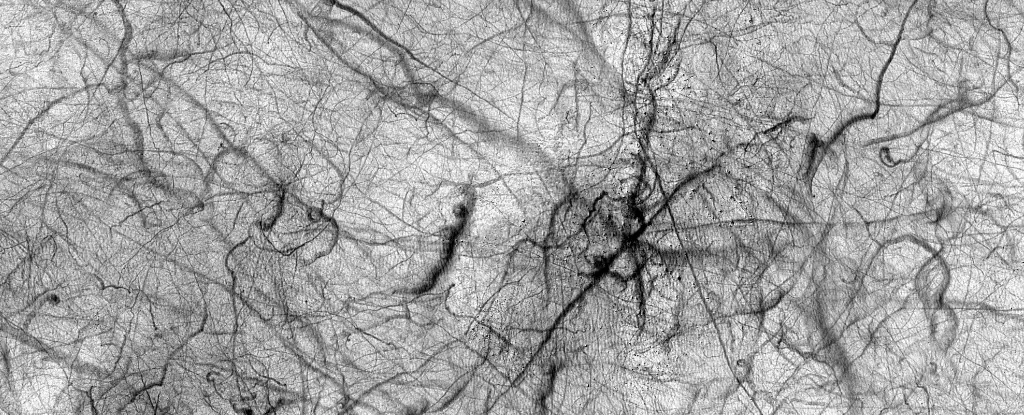In September 2022, an astonishing image captured by the HiRISE camera, part of NASA’s Mars Reconnaissance Orbiter, unveiled the captivating activity of dust devils on the surface of Mars. These swirling phenomena are not just random spectacles; they are critical to understanding Martian atmospheric dynamics and geological history. The focus of this significant image is the Haldane Crater, where patterns left by dust devils reveal the planet’s relentless and intricate weather systems. Each dust devil forms, moves with purpose, and eventually fades, only to be replaced by new whirlwinds, illustrating the dynamic nature of Mars’ environment.
Mars is often dubbed the “Red Planet,” a moniker inspired by the iron oxide that coats its surface, giving it a distinctive reddish hue. With a thin atmosphere predominantly composed of carbon dioxide—about 95%—Mars holds an average temperature of around -60 °C. This fragile atmosphere barely resembles Earth’s and is incapable of sustaining human life without advanced technology. Nonetheless, the Martian atmosphere exhibits significant activity, allowing for phenomena such as dust devils, which serve as both a transformative force and a potential hazard for rovers and landers stationed on the planet.
Dust devils on Mars are formed through a process akin to what occurs on Earth; when sunlight heats the surface, warm air rapidly rises and creates a rotating column that picks up dust. These whirlwinds can vary in size and duration, with some extending for kilometers and lasting hours. The significance of such events goes beyond their mesmerizing appearance; they are crucial agents in the redistribution of dust across the Martian landscape, impacting weather and climate patterns.
These dust devils play a dual role when it comes to the technology deployed on Mars. They can inadvertently cover solar panels and other instruments with a layer of dust, hindering their efficiency by blocking vital sunlight. Conversely, their strong winds can serve as a natural cleaning mechanism, effectively removing accumulated dust and restoring functionality. This inherent dichotomy makes dust devils both a friend and foe to the machines tasked with exploring the Martian terrain.
Recent studies by teams of astronomers focusing on the tracks left behind by these dust devils aim to decode the rate at which dust settles and accumulates on the surface. Understanding this process holds significant implications for future missions to Mars, as dust accumulation can pose threats to equipment and instruments vital for scientific research and exploration.
The study of dust devils also feeds into the broader narrative of Mars’ geological history. The planet presents a landscape dotted with evidence suggesting that it once harbored liquid water and possessed a thicker atmosphere capable of supporting life. Features such as vast plains, colossal volcanoes like Olympus Mons, and the extensive canyon system known as Valles Marineris speak to an era when Mars was potentially more hospitable. However, understanding these volcanic and erosional forces requires analyzing contemporary weather phenomena like dust devils, which provide insight into current atmospheric conditions.
As humanity dreams of sending astronauts to Mars, the knowledge gleaned from the activity of dust devils is essential. They not only shape the planet’s environment but also present challenges that must be addressed for successful manned missions. Understanding the intricate balance of sediment redistribution aids scientists in developing strategies to protect technology designed for exploration.
The study of dust devils on Mars reveals a stunning intersection of beauty and scientific inquiry. From the intricate tracks carved into the Martian surface to their dual role as both dust carriers and cleaners, these phenomena are crucial to unraveling the mysteries of the Red Planet. As we venture farther into our solar system, a deeper understanding of Mars and its atmospheric processes may unlock secrets that have lingered for billions of years.


Leave a Reply